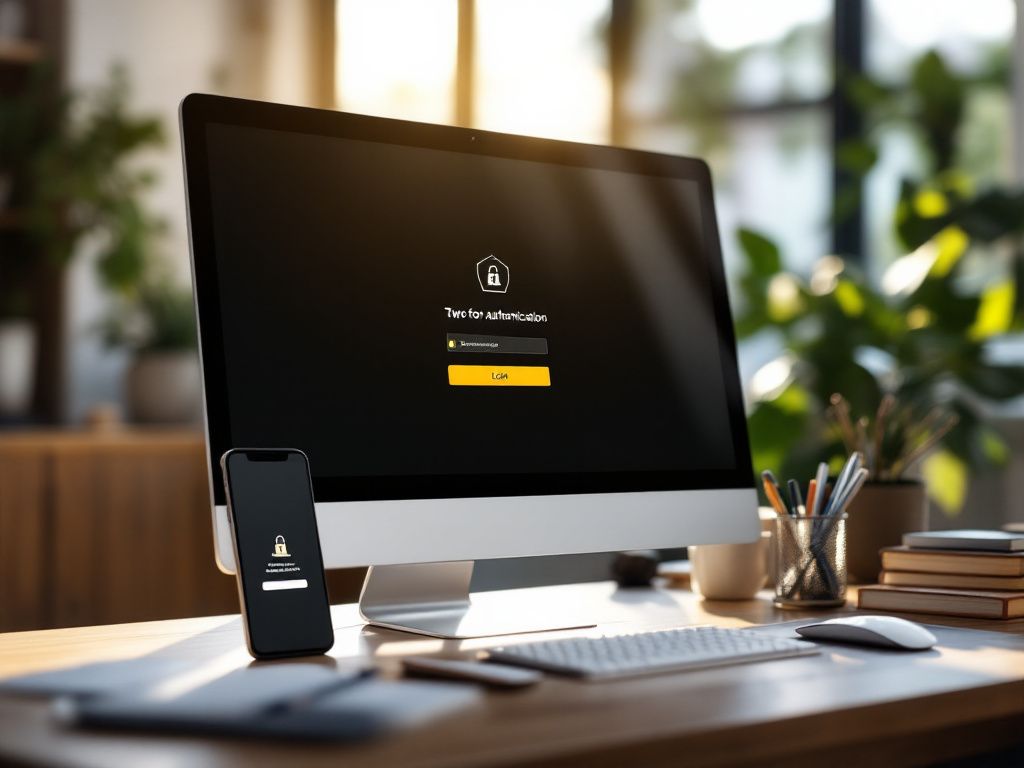
Two-factor authentication represents a critical security enhancement that adds an extra layer of protection beyond traditional passwords. By requiring two distinct verification methods, this approach significantly reduces cyber threats and unauthorized access attempts. Understanding its benefits and proper implementation becomes essential for maintaining robust digital security in today’s interconnected world.
The significance of two-factor authentication
In today’s digital landscape, where cyber threats evolve at an unprecedented pace, traditional password-based security measures have proven insufficient to safeguard sensitive information. The alarming rise in data breaches, with costs exceeding two trillion dollars annually, has forced organizations and individuals to seek more robust authentication solutions. Two-factor authentication emerges as a critical defense mechanism, transforming the security paradigm by requiring users to provide two distinct forms of verification before accessing protected resources.
Understanding Two-Factor Authentication in Modern Security
Two-factor authentication represents a fundamental shift from single-factor authentication methods that rely solely on passwords. This security process requires users to present two different authentication factors from separate categories: something they know (like a password), something they have (such as a smartphone), or something they are (biometric data). By implementing this dual-verification approach, 2FA creates multiple barriers that significantly reduce the likelihood of unauthorized access, even when primary credentials become compromised.
Distinguishing 2FA from Multi-Factor Authentication
While often used interchangeably, 2FA and MFA serve distinct purposes within the authentication spectrum. Two-factor authentication specifically requires exactly two verification methods from different factor categories, whereas multi-factor authentication encompasses any system requiring two or more authentication factors. Organizations in high-security sectors, including healthcare facilities, government agencies, and financial services, typically opt for comprehensive MFA solutions that may include three or more verification steps. However, 2FA provides substantial security improvements for most business and personal applications while maintaining user convenience.
Critical Protection Against Modern Threats
The implementation of 2FA addresses multiple attack vectors that traditional passwords cannot withstand. Phishing attempts, which deceive users into revealing credentials through fraudulent communications, become significantly less effective when attackers lack access to the second authentication factor. Similarly, brute-force attacks that systematically attempt password combinations face insurmountable obstacles when confronted with time-sensitive verification codes or biometric requirements. This enhanced data protection proves essential as cybercriminals develop increasingly sophisticated methods to exploit single-factor vulnerabilities.

Exploring different authentication methods for 2FA
Two-factor authentication encompasses several distinct methods, each offering unique advantages and challenges for organizations seeking to strengthen their security posture. Understanding these various approaches enables businesses to select the most appropriate solution for their specific needs and user base.
Hardware Tokens: Traditional Physical Security
Hardware tokens represent one of the earliest forms of two-factor authentication, typically appearing as small key fobs that generate time-sensitive codes. These devices produce new authentication codes every 30 to 60 seconds, creating a constantly changing security layer. The primary advantage lies in their independence from network connectivity – they function regardless of internet availability or cellular service. However, hardware tokens present logistical challenges including distribution costs, replacement procedures when lost, and the inconvenience of carrying additional devices.
Push Notifications: Streamlined Mobile Authentication
Push notification systems have gained significant popularity due to their user-friendly approach. When a login attempt occurs, the system sends a notification directly to the user’s registered mobile device, requiring simple approval or denial. Apple implements this method effectively through their two-factor authentication system, sending push notifications to trusted devices when someone attempts to access an Apple ID account. This method eliminates the need for manual code entry while providing real-time awareness of access attempts.
SMS Verification and Voice Authentication
SMS verification remains widely adopted due to its universal compatibility with mobile devices. Users receive one-time codes via text message, which they enter to complete authentication. Google extensively utilizes SMS verification across its services, offering it as a backup method for users who may not have access to their primary authentication app. Voice-based authentication operates similarly, delivering codes through automated phone calls – particularly valuable for users with hearing impairments or in situations where text messages may be delayed.
Comparative Security Considerations
While SMS and voice methods offer broad accessibility, they face vulnerabilities including SIM swapping attacks and network interception. Push notifications and hardware tokens generally provide stronger security, though they require specific infrastructure and device compatibility.

The role of mobile devices and apps in 2FA
Mobile devices have emerged as the cornerstone of modern two-factor authentication, revolutionizing how users secure their digital accounts. With smartphones becoming ubiquitous, they provide an ideal platform for implementing robust 2FA solutions that are both convenient and secure.
Leading Mobile Apps for 2FA
Google Authenticator stands as one of the most widely adopted 2FA mobile apps, generating time-based one-time passwords (TOTP) that refresh every 30 seconds. This app works offline, eliminating dependency on cellular networks or internet connectivity. Users simply scan a QR code during setup to link their accounts, and the app continuously generates six-digit codes for verification.
Authy offers enhanced functionality beyond basic code generation, including cloud backup capabilities and multi-device synchronization. This mobile app allows users to secure their authentication codes across multiple devices while maintaining end-to-end encryption. Authy also provides push notifications for streamlined authentication, reducing the need to manually enter codes.
Setup Process and Implementation
The 2FA setup process for mobile devices typically involves three straightforward steps. First, users download their preferred authenticator app from their device’s app store. Second, they navigate to their account’s security settings and select the option to enable two-factor authentication. Finally, they scan the provided QR code using their mobile app, which automatically configures the authentication link.
Security Advantages of Mobile-Based 2FA
Mobile devices offer superior security compared to SMS-based authentication methods. Unlike text messages, which can be intercepted through SIM swapping attacks, authenticator apps generate codes locally on the device. This approach ensures that even if network communications are compromised, the authentication process remains secure. Additionally, mobile apps can function without cellular coverage, providing reliable access to authentication codes in various environments.

Addressing the challenges and future of two-factor authentication
While two-factor authentication has significantly enhanced digital security, several challenges continue to impact its widespread adoption and effectiveness. Understanding these limitations is crucial for organizations planning comprehensive security strategies.
Current Security Vulnerabilities in 2FA Systems
Despite its protective benefits, 2FA faces notable security weaknesses that cybercriminals actively exploit. SIM swapping represents one of the most concerning threats, where attackers convince mobile carriers to transfer a victim’s phone number to their device. This attack bypasses SMS-based authentication entirely, allowing unauthorized access to accounts protected by text message codes.
Phishing attacks have also evolved to target 2FA systems directly. Sophisticated attackers now create fake login pages that capture both passwords and authentication codes in real-time, immediately using these credentials to access legitimate accounts. Additionally, session hijacking and man-in-the-middle attacks can intercept authentication tokens, particularly on unsecured networks.
User Adoption Barriers and Resistance
User resistance remains a significant implementation challenge. Many individuals perceive 2FA as inconvenient, citing additional login steps and device dependency as primary concerns. Device loss scenarios create particular anxiety, as users fear being permanently locked out of their accounts. Organizations frequently encounter pushback from employees who view security measures as productivity obstacles.
Emerging Trends and Technological Innovations
The future of authentication increasingly points toward biometric methods as primary authentication factors. Fingerprint scanning, facial recognition, and voice authentication are becoming more sophisticated and accessible. Passwordless authentication systems are gaining momentum, potentially eliminating traditional password vulnerabilities entirely.
Adaptive authentication represents another promising development, using machine learning to analyze user behavior patterns and risk factors. This approach can dynamically adjust security requirements based on login context, location, and device characteristics.
Legislative and Regulatory Influences
Government regulations are increasingly mandating stronger authentication standards across industries. Financial institutions face stricter compliance requirements, while healthcare organizations must address HIPAA considerations. These legislative impacts are driving broader 2FA adoption and standardization efforts globally.

The essentials to remember about two-factor authentication
Two-factor authentication continues to evolve as a cornerstone of modern cybersecurity strategies. As digital threats become more sophisticated, we can expect further integration of biometric technologies and artificial intelligence to strengthen authentication processes. The future likely holds seamless authentication experiences that balance security with user convenience, while regulatory frameworks will increasingly mandate stronger authentication standards across industries, making 2FA adoption not just recommended but required for comprehensive data protection.